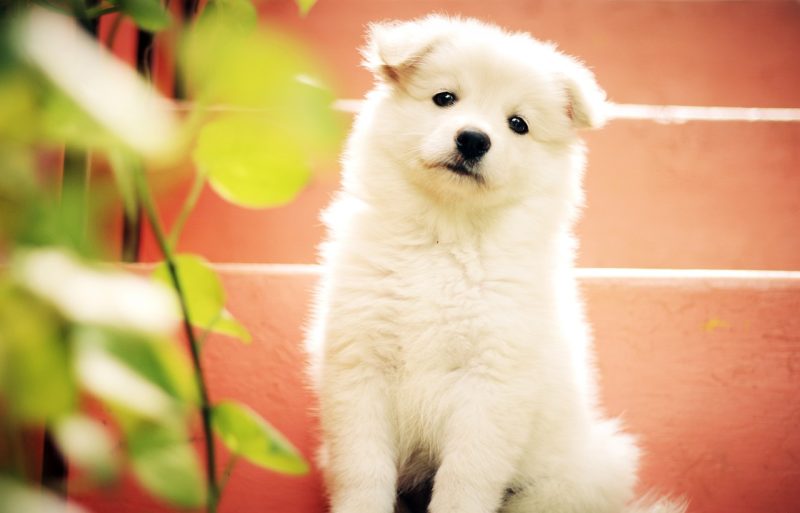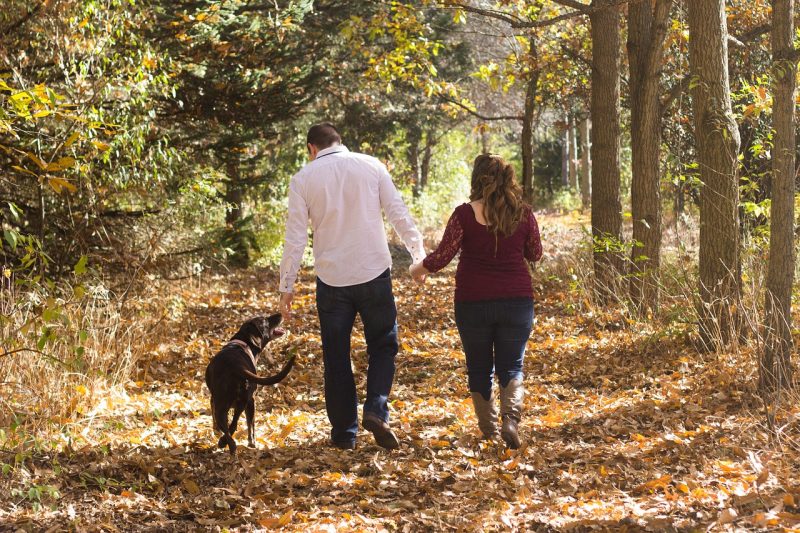Best Dogs for Hunting
Are you an avid hunter looking for a new canine companion? Or maybe you want to get into hunting and need a dog that can show you the ropes. Well, you’ve come to the right place! This guide will highlight the best dog breeds for hunting different types of game.
I’ve hunted with dogs my whole life. Growing up in the countryside, my family always had a pack of beagles, labs, or hounds for hunting rabbits, ducks, pheasants, and more. Now I mainly hunt upland birds like grouse and woodcock in the fall and snowshoe hares in the winter.
Over the years, I’ve learned a thing or two about what makes an excellent hunting dog.
So trust me when I say – the right dog can take your hunting to the next level. But you need a breed suited for how and what you want to hunt. This article will break that all down, as well as tips for training, care, real-world stories, and more!
Let’s get right into it!
Best All-Around Dog Breeds For Hunting
If you want one dog that can do it all, these versatile breeds are your best bet:
1. Labrador Retriever
Labs are the most popular dogs in America for good reason. They have an eagerness to please, calm temperament, and high intelligence that makes them easy to train. Labs excel at hunting waterfowl and upland birds. Their soft mouth allows them to retrieve downed game without damage.
I’ve had several lab hunting companions, and they never cease to impress me. They can mark birds, crash through thick brush, and swim icy waters with ease. Labs thrive on constant activity. Outside of hunting season, they make wonderful family pets too.
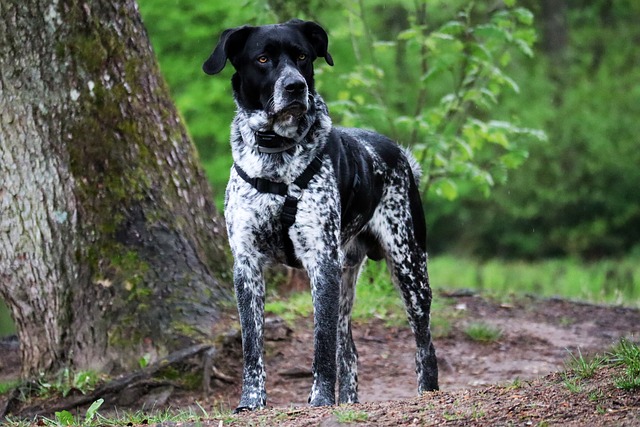
2. German Shorthaired Pointer
For an all-purpose gun dog, German Shorthairs can’t be beaten. They point staunchly, track wounded game tenaciously, and retrieve faithfully. Their short coat sheds dirt easily and stands up to nasty cover.
Shorthairs have endless energy and intensity for hunting. I use mine for pheasant, grouse, quail, hare, and even deer. With proper obedience training, these smart dogs also make great house pets during off days.
3. Vizsla
The Vizsla isn’t as well known as other hunting breeds but shouldn’t be overlooked. They can locate and point upland gamebirds as well as any pointer. And their retrieving drive rivals that of the best waterfowl dogs.
In addition to hunting skills, Vizslas are affectionate, gentle, and eager to form close bonds with their owners. They have an “off-switch” allowing them to be calm indoors. But make no mistake – they need lots of vigorous exercise daily.
Retrievers – The Ultimate Waterfowl Dogs
For hunting ducks, geese, and other waterbirds, you can’t do better than a retriever. Their physical traits and temperament make them ideal for this work. Check out the best of the bunch:
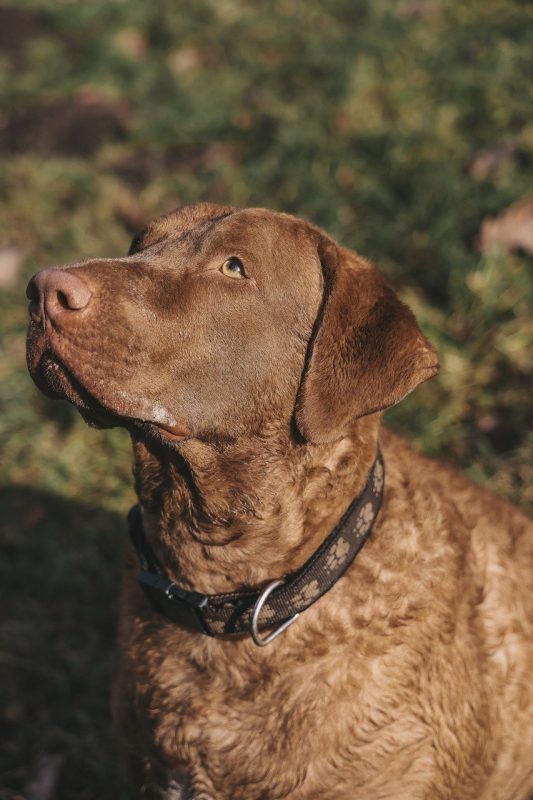
1. Chesapeake Bay Retriever
Chesapeake Bay retrievers were bred specifically for duck hunting in cold, rough conditions. Their dense, wavy coat sheds water easily. An oily topcoat also makes them impervious to moisture.
In frigid waters that would stop other dogs, Chessies will keep on swimming. They have tremendous stamina to hunt waterfowl for hours on end. Along with physical resilience, Chessies are focused workers with an independent spirit.
2. Nova Scotia Duck Tolling Retriever
The smallest of the retriever crew, Tollers are gaining popularity as waterfowl dogs. Despite their petite size, they have no shortage of hunting desire. Tollers eagerly dash along shorelines, enticing curious ducks to come investigate.
Once birds are within range, these dogs dive right in to retrieve downed fowl. After a retrieve, they’re ready to start tolling again. Their moderate coat and size also makes them great for small-water hunting and upland birds.
3. Curly-Coated Retriever
Bred in England, curly-coat retrievers are stalwart waterfowl dogs. Their tight curls repel water and keep them warm while facing nasty weather. Outstanding swimmers and markers, they have limitless energy and drive when hunting.
Upland Bird Hunting Dogs
Unlike other retriever breeds, curlies are more independent thinkers. So owners need to exert confident leadership. Do this, and you’ll have a powerful partner that excels across various hunting pursuits.
Pursuing game birds like pheasant, grouse, quail, and chukar requires unique skills. Only certain breeds have the athleticism and stamina required for the job.
1. English Springer Spaniel
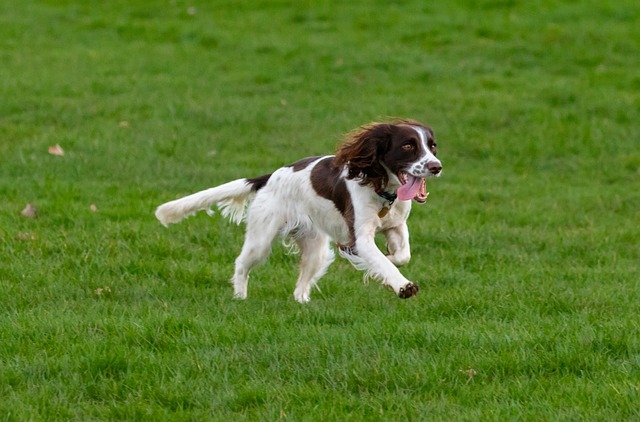
If I had to pick one dog for upland hunting, I’d go with the springer spaniel every time. Springers have good noses, respond well to training, and cover ground tirelessly. Unlike other spaniels, they have a more muscular build allowing them to bash through thickets.
While they lack the finesse of pointers, springers make up for it with gritty determination. It’s nearly impossible for birds to escape once springers are hot on their trail. They’ll hunt all day long, given the chance.
Setters get their name from their distinctive “setting” (crouching) behavior when birds are located. English setters have a regal look with their speckled coats and long, elegant features. But make no mistake – they are hard-working gundogs.
2. English Setter
Given adequate exercise, English setters are calm housemates between hunts. When it’s time to hunt, they turn into high-powered prey machines. English setters combine keen noses, speed, athleticism, and style that upland hunting demands.
3. Boykin Spaniel
Developed in South Carolina, the Boykin spaniel was created specifically for hunting wild turkeys and ducks in the Wateree River swamplands. Their compact size allows them to fit nicely in small hunting skiffs.
Today, Boykins excel at upland hunting too. They have good noses, respond eagerly to training, and retain lessons well. Their medium coat sheds water easily. An amiable temperament makes Boykins pleasant pets between hunts.
Hounds – Hot Noses For Hares & More
Hounds use extraordinary scenting ability to find and pursue quarry. For hunting rabbits, foxes, raccoons, mountain lions, and other game, hounds are the undisputed champs.
1. Beagle
The beagle’s superb sense of smell is renowned. Their tracking ability allows them to unravel the most complex trails left by game. Although they hunt independently, beagles are happy to work in packs too.
For rabbit and hare hunting, beagles are tops. Once rabbits break cover, beagles use their loud voices to keep you informed of the chase. My favorite thing – beagles are compact enough to hunt thick wooded areas effectively.
2. Plott Hound
The Plott hound is a tenacious tracking breed used to hunt bears and boars across the South. When big game is afoot, Plotts turn into relentless pursuit machines. They’re athletic, courageous, and aggressive when on the job.
Plotts work solo or in packs to corner quarries. Their loud, ringing voice allows hunters to follow the action from afar. Excellent swimmers, Plotts also make fine raccoon and mountain lion dogs. With owners who understand their drive, Plotts thrive as family companions too.
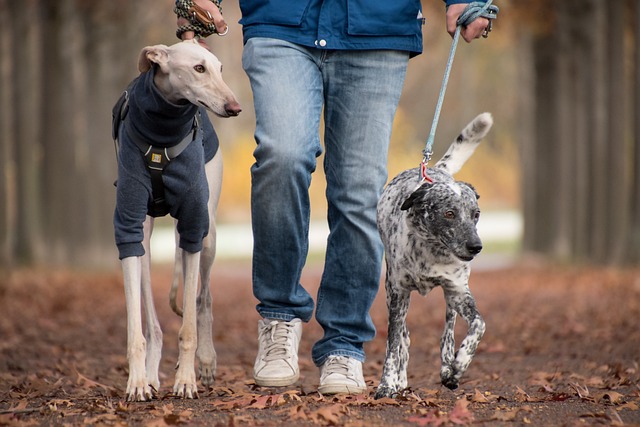
3. Greyhound
Sleek and commanding, the greyhound is a sighthound bred to spot and run down fleet-footed prey. They dispatch jackrabbits and coyotes with ease. For wide open coursing game, I don’t believe there’s a better canine suited.
Not just good sprinters, greys have incredible stamina at distance running. After the hunt, they’re mannerly house pets. But greys must be kept leashed or safely confined when not hunting – their pursuit instinct is strong.
Choosing the Right Hunting Dog for Your Needs
Deciding which hunting dog is best for you depends on several factors:
Your Quarry
Carefully consider which game animals you want to hunt most. Certain breeds are better suited for specific species. You’ll also want to factor in the terrain and habitat you typically hunt.
Your Hunting Style
Think about how you want to hunt. Do you enjoy the thrill of the chase with hounds? Or precise spot-and-point upland hunting? Waterfowling in a blind or small water jump shooting? Match a breed to your preferences.
Your Lifestyle
Don’t forget – you’ll be living with your hunting dog year-round, not just during hunting season. Make sure to select a breed that matches your family’s activity level and living environment.
Training Tips for Hunting Dogs: The Ultimate Guide for Handlers
Do you want a loyal hunting companion who works closely with you out in the field? Proper training is key to developing dogs with top notch hunting skills. Here are some key tips to help you get started:
Obedience First
Before you head out into the wilderness, your dog needs a solid foundation in obedience. A dog who ignores commands or wanders off trail makes for a frustrating hunt.
“Give young puppies lots of short, fun training sessions to start building obedience.”1
Use reward based methods and keep early sessions under 10 minutes. Master basic cues like sit, stay, come, heel and kennel up.
Develop Key Skills
Hunting dogs need specialized abilities like:
- Scent tracking – Follow specific scents through varied terrain
- Retrieving – Locate and bring back downed birds
- Steadiness – Wait calmly until given the command to go
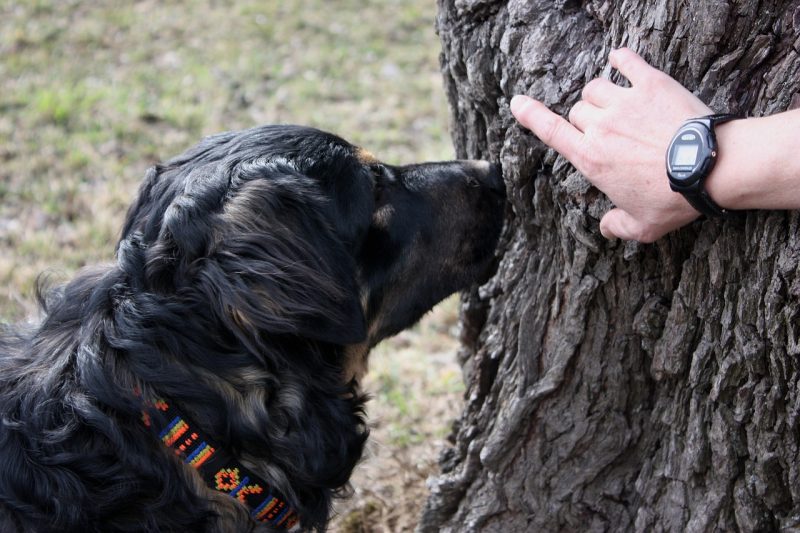
How do you build these skills?
Scent Tracking
Lay scent trails for your dog to follow using dead birds, feathers or rabbit skins. Help them learn to pinpoint the source.
Retrieving
Use bumpers, dummies or real birds and practice having your dog locate, pick up and carry objects back to you. Use a “hold” command until you take the object.
Steadiness
Work up duration for sit and stay commands. Also teach force fetching using ear pinches to get your dog to pick up and carry items it would prefer to leave.
What methods work best? Positive reinforcement! Food, praise and play drive dogs to succeed. Corrections or punishment shut down learning. For example, use an ear pinch to teach force fetching then reward carrying.
Real World Practice
Once basic skills are in place, the key is practice in realistic hunting scenarios. Use these tips:
Plant Birds
Hide dead game birds in heavy cover and thickets. Track and retrieve bolsters confidence.
Hunt Small Game
Tag along on squirrel and rabbit hunts before tackling big game like ducks or pheasant.
Use Blanks
Fire starter pistols that sound like a real shotgun but without shot to steady your dog around loud noises.
Try Hunt Tests
Enter hunt tests and field trials to showcase abilities in a trial setting.3 These build experience in a simulated hunt.
What about actual hunting? Take it slow the first few times out with short sessions. Gauge your dog’s reactions and build from there. Stay positive!
Troubleshooting Common Issues
No dog is perfect! Use these tips to fix typical hunting dog problems:
Wandering Off
Reinforce solid recall and use check cords to restrict range until obedience is reliable.
Poor Nose Work
Improve scenting ability through hide and seek games. Up the challenge by aging tracks.
Dropping Birds
Use fun retrieves to build desire and confidence carrying birds. Don’t force hold if they are fearful.
Keeping Your Hunting Dog in Tip-Top Shape
As a hunting dog owner, you want your four-legged friend to be healthy and happy while out in the field. An unhealthy dog means missed birds and disappointed hunters. Follow these tips to make sure your dog stays in peak physical condition all season long.
Nutrition
You are what you eat. And so is your dog. Feed a high-quality dog food specifically formulated for active working dogs. Check the ingredients – the first few should be quality animal-based proteins like chicken, lamb, or fish. Avoid fillers like corn, wheat, and soy.
Supplement with oils high in omega-3s to reduce inflammation and joint pain. Salmon oil and coconut oil work well. Hydration is also critical. Bring plenty of water for your dog while training or hunting. Dehydration can quickly lead to fatigue and health issues. Get a portable dog water bottle to make it easy.
Exercise
Hunting dogs need plenty of exercise to build their endurance for long days in the field. Walk or run them daily, and incorporate swimming whenever possible. This low-impact exercise strengthens muscles without added stress to joints.
Play fetch games to maintain enthusiasm and train recall. Hide treats around the yard and let your dog sniff them out to exercise their powerful nose.
Always properly warm up muscles before intense training sessions to prevent injury. Start slow with walking and light activity.
Grooming
A clean dog is a healthy dog. Regular brushing removes burrs, sticks, and dirt that can harbor bacteria or cause irritation. Check for cuts, parasites, hot spots, swelling, or anything else out of the ordinary. Trim overgrown fur between foot pads that can collect mud.
Clip nails as needed to maintain proper foot structure. Clean ears weekly to prevent infections. Brush teeth to reduce bacteria and bad breath. Regular grooming promotes overall health and lets you bond with your dog.
Veterinary Care
No matter how careful you are, hunting dogs still face health risks like torn pads, snake bites, broken bones, or eye injuries. Establish a relationship with a trusted veterinarian before issues occur.
Schedule wellness exams at least annually to check for heartworms, parasites, dental issues, arthritis, and other hidden problems. Keep vaccinations current.
Spay/neuter when appropriate. Having a vet who knows your dog already makes dealing with emergencies much less stressful.
Avoiding Common Hunting Dog Injuries
Spending long days traversing rough terrain puts hunting dogs at increased risk of injuries. Here’s how to protect your loyal companion.
Overexertion
Eager dogs will run themselves to utter exhaustion if you let them. Monitor your dog closely for signs of fatigue like lagging behind or loss of focus. Take regular breaks, provide water, and call it a day if needed. Pushing a tired dog leads to sprains, strains, and heat stroke.
Build endurance slowly over time. Condition your dog properly before hunting season starts. And know your limitations as well as your dog’s.
Porcupine Quills
These prickly critters defend themselves by detaching quills that embed deeply when touched. Quills around the face or throat can be especially dangerous.
Safely restrain the dog if you can and call a vet immediately. Do not cut quills or pull on them forcefully. Let a professional anesthetize the dog and carefully remove them. Prompt treatment helps reduce infection risk and further injury.
Cuts and Abrasions
Hunting dogs tear through all kinds of thick brush and sharp vegetation. Stop uncontrollable bleeding by applying direct pressure with a clean cloth. Flush minor cuts with saline solution or gentle soap and water before applying antibiotic ointment and a light wrap.
Watch for redness, swelling, oozing, or other signs of infection. Open wounds are prone to dangerous bacteria. Keeping them clean promotes fast, healthy healing.
First Aid Essentials for Hunting Dogs
Be prepared for hunting dog injuries by keeping these supplies on hand:
- Sterile bandages, gauze pads, first aid tape, and tweezers
- Antibiotic ointment or spray
- Eyewash for flushing debris
- Chemical ice packs
- Medical gloves
- Rectal thermometer
- Muzzle
- Emergency phone numbers for your vet
Also consider taking a first aid class focused on hunting dogs. Knowing what to do in case of an emergency could save your best friend’s life.
Stay calm, assess the situation, stop any bleeding, and seek professional care as needed. Having the right gear and some basic knowledge makes all the difference.
Dog Breeds For Hunting In A Nutshell
In conclusion, choosing ideal dog breeds for hunting is an important decision that requires carefully matching your needs to canine traits and tendencies. Key considerations include quarry, hunting style, lifestyle fit, trainability, and health. While breeds like Labrador Retrievers, German Shorthaired Pointers, and Beagles rise to the top for versatility, waterfowling, or scent tracking respectively, many factors come into play. Invest time upfront finding your perfect match. Then focus on proper care, training, and realistic hunting scenarios to develop skills. Condition your dog physically to prevent injuries. With a well-suited, obedient companion by your side, your hunting success and enjoyment will reach new heights.
Dog Breeds For Hunting: Frequently Asked Questions
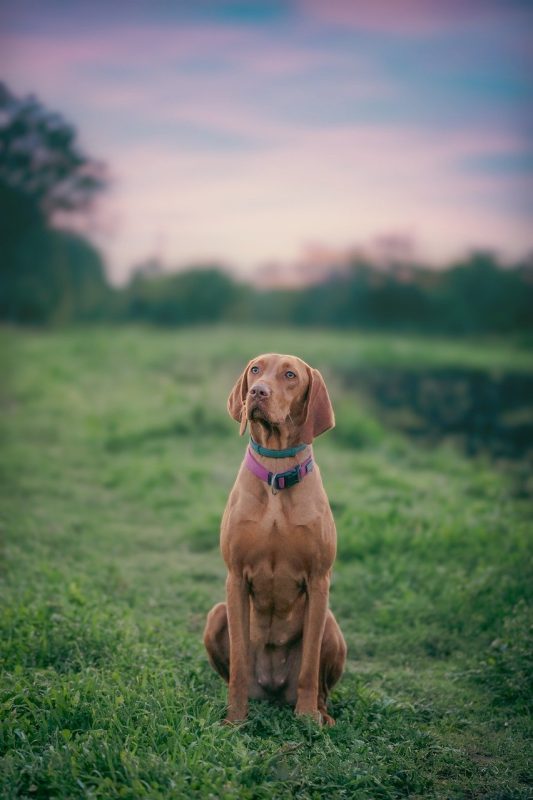
What is the easiest hunting dog breed to train?
The Labrador Retriever is widely considered the easiest hunting dog to train. Labs have a strong desire to please their owners, take well to positive reinforcement techniques, and their intelligence allows them to understand concepts quickly.
What dog breed has the best sense of smell for hunting?
The Bloodhound is believed to have the most acute sense of smell among all dog breeds. Their tracking ability aided by their legendary nose makes them superb hunting companions for trailing big game like deer or bears over great distances.
What is the calmest dog breed for hunting?
The Vizsla, though energetic and athletic in the field, is known as one of the calmest hunting breeds at home. Outside of hunting season when exercised sufficiently, Vizslas are gentle, quiet, and affectionate housemates.
Should I insure my hunting dog in case of injuries?
We highly recommend health insurance for sporting and working breeds prone to shoulder/ACL tears, snake bites, etc. out in the field. Trupanion, Embrace Pet Insurance, PetPlan and AKC offerings ranked highly.

